Slow Flowers: American Grown Wreaths for the Holidays
November 29th, 2014
Thanks to some wonderful attention for Slowflowers.com in the media, I’ve been designing and writing and talking about American Grown Wreaths for the Holidays quite a bit lately.
Tonight, one of my friends asked: Isn’t that wreath-making how-to on a video?
And I said, “Not this time, but I’ll post the steps on my blog.” She’s getting ready for tomorrow’s Advent wreath-making party so I thought I’d get the instructions up quickly.
Here, you’ll find two of the DIY wreath how-to’s. I created the first for Chris Ross, Home & Garden editor for the San Diego Union-Tribune daily. “From Harvest to Holiday” appears in today’s newspaper and features ingredients grown near San Diego by Resendiz Brothers Protea Farms. Thanks to Diana Roy and Mel Resendiz for sending me the flowers and foliage to play with!!!
Getting Started
Do-it-yourself wreath-making is as easy as placing flowers in a vase. Start with a walk through your neighborhood to gather “gifts” from nature, especially downed branches, autumn leaves, conifers and dried flowers (note: always wild-gather or forage with permission and never on public land).
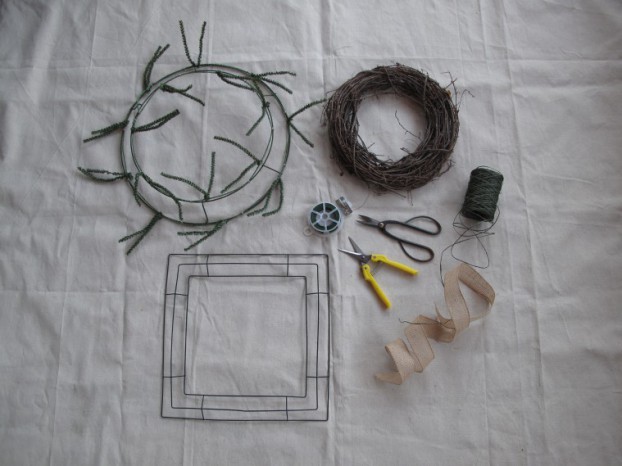
Get your supplies in order: Wreath forms, bindwire or twine, clippers, snips, floral wire and ribbon.
1. Get your supplies in order. I bought the wreath forms at Michael’s, but you can also find metal and grapevine wreath bases at most floral and craft supply outlets. Choose your wreath base. For this design, I worked with a 15-inch round frame.
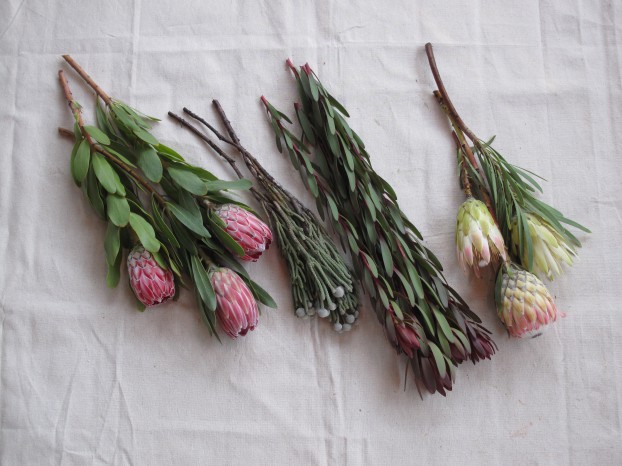
The floral elements and accents, including from left: Pink Protea, Brunia albiflora, Leucadendron and Creamy White Protea
2. Gather flowers and foliage: As you gather branches, foliage and other elements, clean away debris and trim away broken parts. Lay out pieces on sheets of newspaper and allow them to partially dry (this helps reduce mildew). Plan for twice as much as you think you’ll need. You want your wreath to look rounded and dense rather than thin and flat so make sure you have plenty of material.
3. Start with the foliage base: Working section by section, arrange botanical elements on the form. I like to work in small sections, attaching clusters or bunches of material with bind wire or twine. Use dark green or natural colored twine so it visually disappears among the foliage.
Here, I’ve alternated two types of foliage: Grevillea ‘Ivanhoe’, with a finely-toothed reddish-green leaf, and Banksia integrifolia, also called coast banksia, valued for the silvery underside of the olive-colored oval leaves. The banksia’s two-toned foliage adds a wintry sparkle to the wreath and contrasts beautifully with the wispy grevillea.
4. After each section is applied, hide stems by staggering the next cluster on top of the prior one.
5. Continue adding to the form until the base is completely covered with greenery.
6. Create “accent details.” For the “flower” accents, I gathered three mini-bouquets, their stems wrapped in bind wire and attached them at intervals around the 18-inch wreath. This technique evenly distributes the weight of heavier protea flowers as focal points. Each cluster includes one white and one pink protea bloom, five dark pink leucadendron sprigs and one silvery spray of Brunia albiflora, also called coffee bush.
7. An olive-green burlap ribbon finishes the design.
2nd Wreath, with Edibles
I created the next wreath for Debbie Arrington, Home & Garden editor for the Sacramento Bee daily. She featured it in her column “Seeds,” in today’s edition of the newspaper.
This time, I selected a modern-looking square wreath form and gathered all my ingredients from edible and herbal plants found in most Northern California gardens.
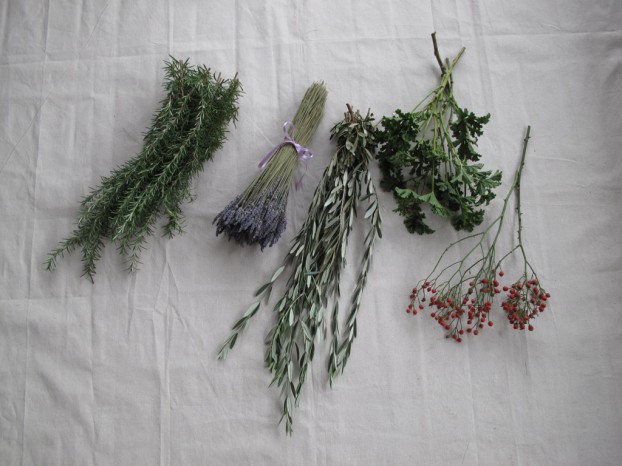
Here are my kitchen-perfect wreath ingredients, from left: Rosemary from my garden; Lavender grown by Martha Lane Lavender in Sequim, Washington; olive foliage from Resendiz Brothers; scented pelargonium foliage, and multiflora rose hips.
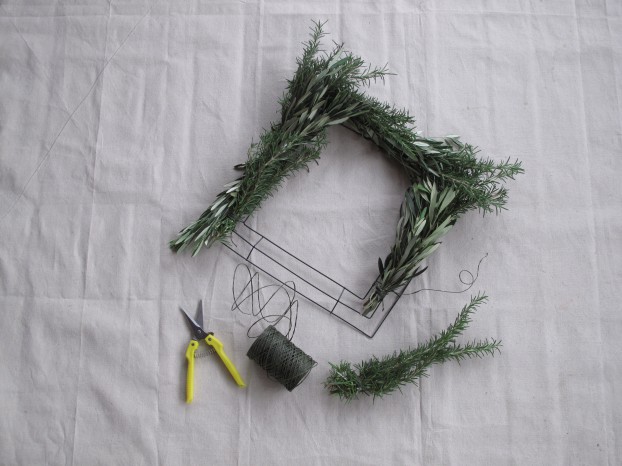
Then I began to attach each bundle around the frame, making sure to alternate types of foliage (rosemary/olive), overlapping to hide the tied ends.
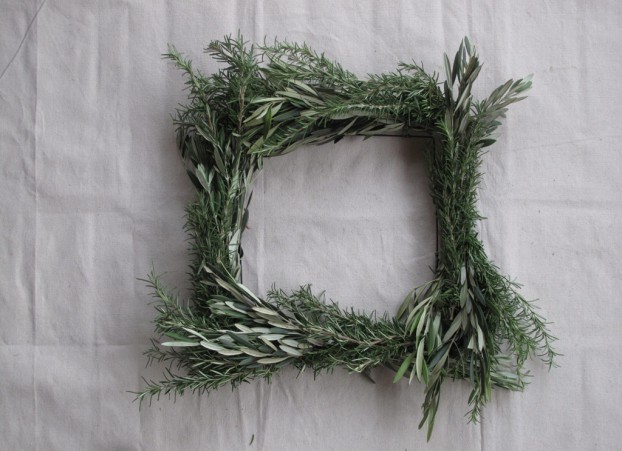
All finished with the greenery. Keep it full-looking by adding extra bunches; Trim excess tips as needed.
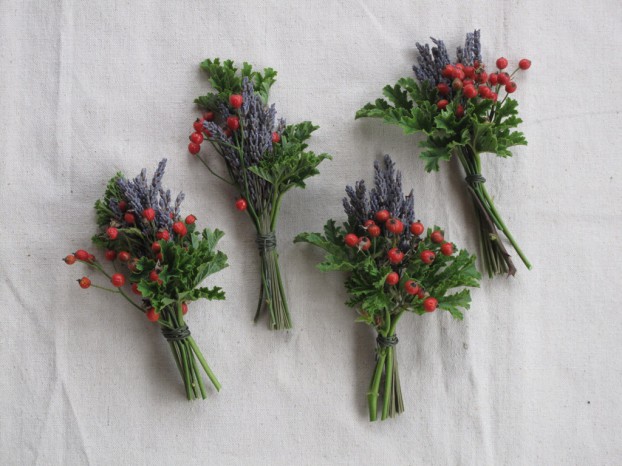
Four small herbal nosegays give me a way to embellish each corner. These include lavender, rose hips and pelargonium foliage.
More American-Grown Wreath News
I owe a huge bouquet (wreath? garland?) of thanks to my PR team Lola Honeybone of Mediaworkshop Nashville and Marla Kramer of Blend PR who have been spreading the word about Slowflowers.com and getting editors, bloggers and radio hosts excited about American Grown flowers for every occasion.
Here are two other wreath stories for the season:
Dallas Morning News, “Learn how to use North Texas greenery in your holiday decor,” written by Mariana Greene
Gardening How-To’s “Scout” Blog, “Why not Buy Flowers We Grow?” contributed by me.
My holiday wish for you: May your homegrown wreath symbolize hospitality, seasonal bounty and optimism for a prosperous New Year.









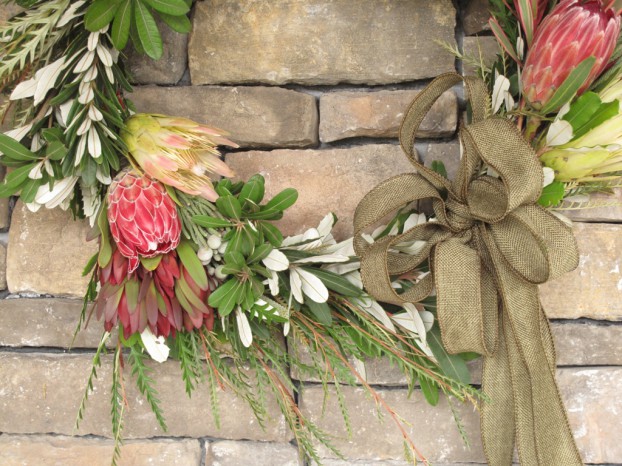
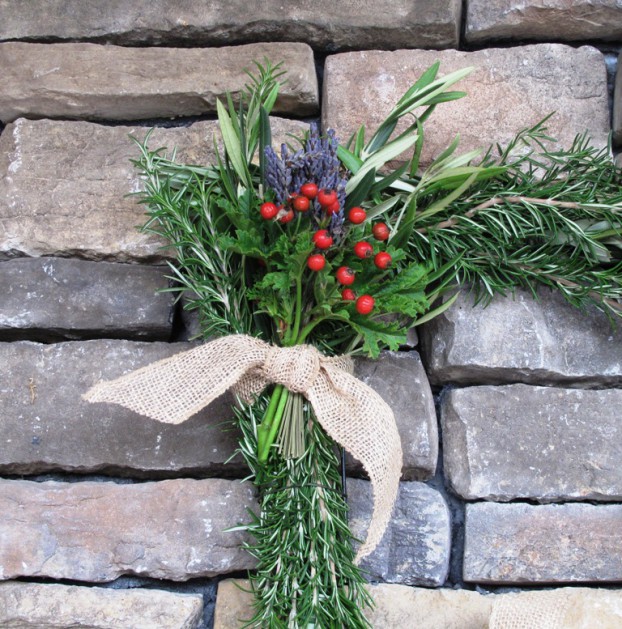
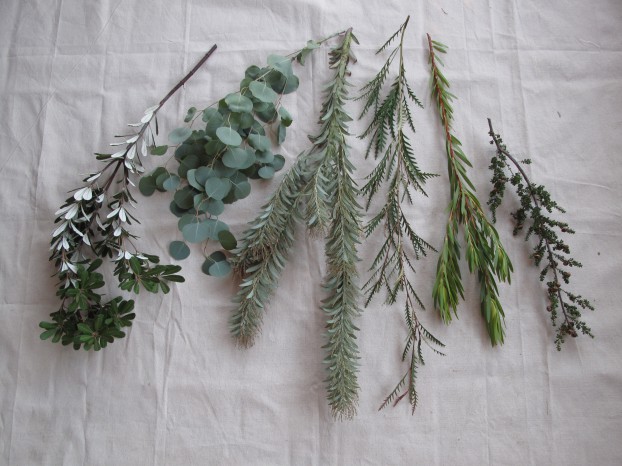
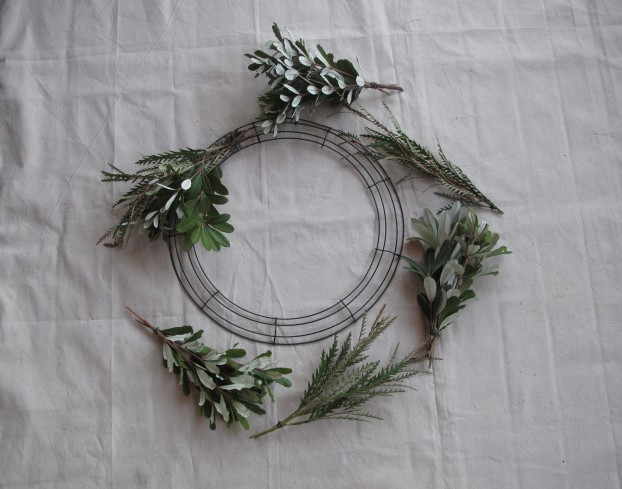
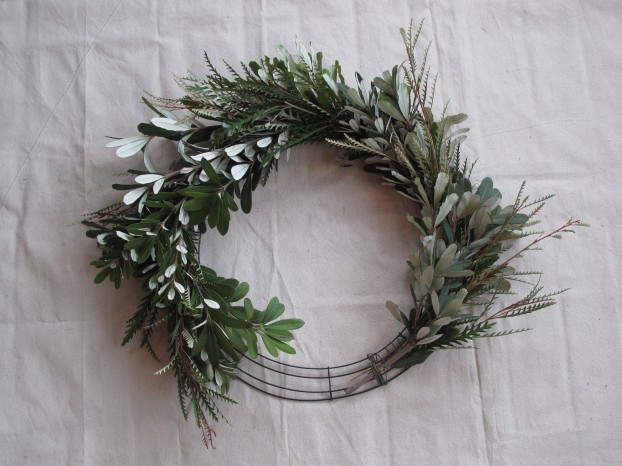
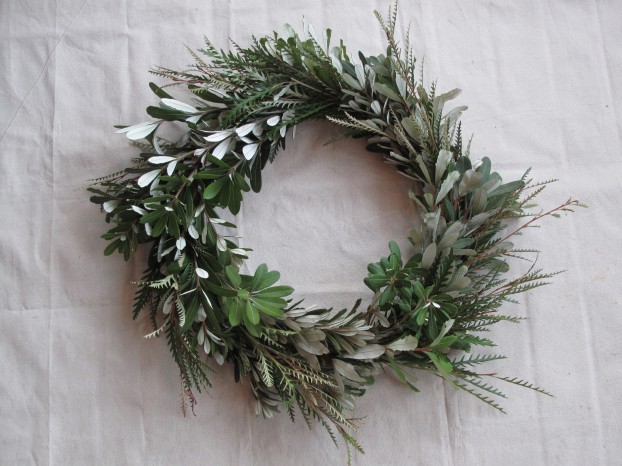
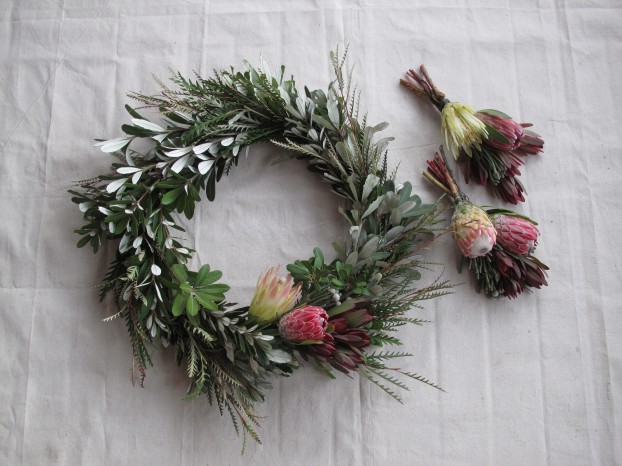
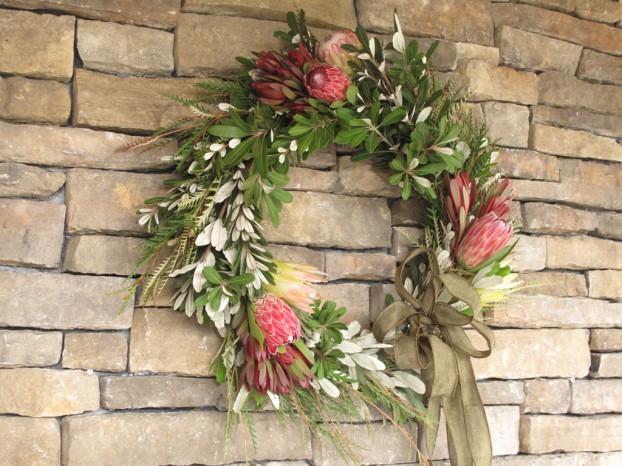
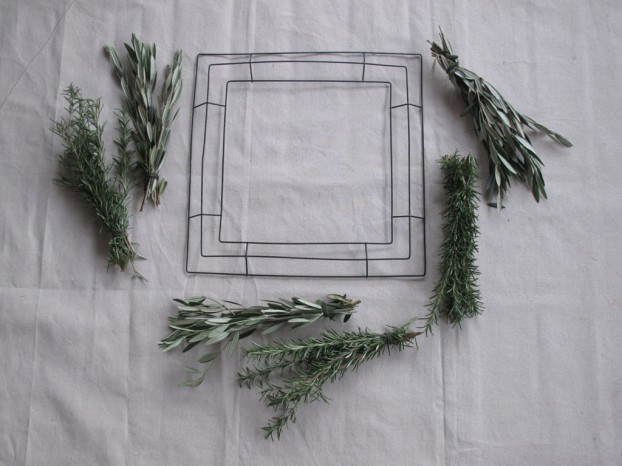
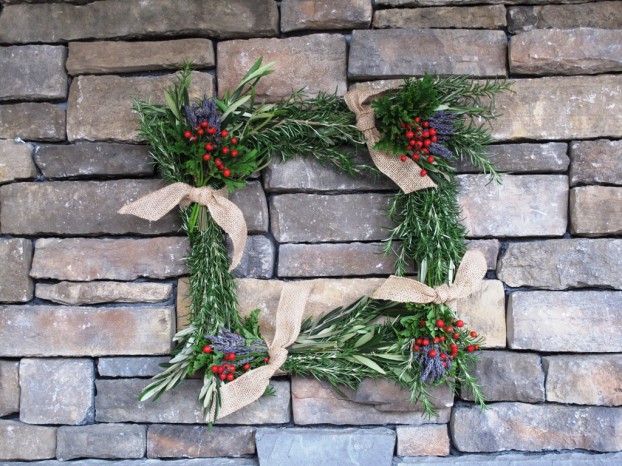
December 2nd, 2014 at 8:48 am
I love your wreath made with edibles. I have the same in my garden and will head to Michaels for a wreath form. Thanks for the ideas.